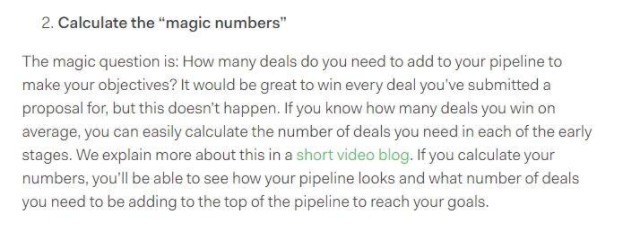By Herman Dixon
Sales managers can’t “push” success onto people. Rather, the best sales managers understand how to “pull” forth the hidden traits or abilities that lie deep within their salespeople.
Here are five action-oriented management tips you can use to foster success among your sales team.
#1: Take every opportunity to motivate through celebration.
Many sales managers forget celebration can come in many different varieties and styles and still be effective as a motivator.
Consider the story of Karen, who had been a middle manager for about six years. She had always done a nice job with her results but never quite enough to gain that next level of achievement. After attending a presentation by a well-known author and trainer who specialized in employee rewards, Karen decided to make a few changes. Instead of always seeing work as simple “expectation,” she began to look at specifics of the work.
She would comment on neatness, time efficiency, or even something as simple as how a phone call was being answered or how an email was structured. When notes of appreciation arrived, she would reward the receiver with something simple – such as a cupcake or a note with a smiley face on it. When the team hit a big goal, she might celebrate with party hats and pizza.
People saw Karen’s sincerity and responded. Her efforts created quite a bit of attention within the company because her department’s results began to soar. When questioned by senior leadership, the members of her area pointed out that it was her recognition of the “small” things individually and “large” things as a unit that made them feel a real part of the process. That simple act of attention got Karen promoted – not once, not twice, but all the way to the executive floor of her company.
Celebrating success is meaningful. It does matter to people. As has been explained time and time again, “It matters not how much you know. What matters is how much others know you care.”
#2: Build teams by focusing on group achievement.
Over the years I’ve seen sales managers proclaim that everyone works “as a team” to make things happen…only to set up rewards solely for individual achievement. The result is that people strive to reach individual goals rather than acting on behalf of the team.
The essence of a “team” environment means not everyone can be the quarterback. Everyone needs to find his or her proper place so the team can reach collective success.
Recently I saw Charlton Heston in the old movie classic, Ben Hur. If you have seen the movie, there is a scene where Ben Hur is doing his best to get his horses to properly pull the chariot, which will be part of the classic “big race.” The horses were beautiful and very spirited but were expressing single-mindedness as they pawed the ground and uttered sounds of defiance. Regardless of the number of times the whip cracked, the chariot barely moved.
Out of nowhere an experienced handler appeared and caught Ben Hur’s attention. He explained that the horses were working against each other – not together. Then, he went about making adjustments to the alignment of the horses. After completing his work, the handler jumped into the chariot, cracked his whip, and off went the horses pulling as a great team – speeding through the course in record time. When he returned, he handed the reins back to Ben Hur and explained that success comes in working the horses as a team. You have to know which position to place them in so the team flourishes.
In a team environment, every member is important. You can’t pit one member against the other – unfair competition can destroy the very teamwork structure you are attempting to build. Where groups might be good for growing participation, teams are vital for gaining lasting results. It is that unique personality and skill – when utilized in unison with others – that matters most. As the well-known proclamation conveys, “Together, everyone accomplishes more!”
#3: Make greatness an everyday expectation.
In his book Good to Great, Jim Collins points out, “Good is the enemy of great.” These words may sound trite, but they represent the reality we see too often. Few actions truly fall into the “greatness column.” “Good” becomes “good enough.”
So why does this occur? Why do most actions simply land in the “good” column? As Collins argues, sometimes your mind hits a level of satisfaction after you achieve a goal. At this point, you may stop thinking big; in turn, this means you’re putting limits on how great you could be. Good then becomes your standard.
One of my strongest memories of my mother comes from my first “real” outside job. I will never forget her saying, “Now, young man, if you can’t go all out to do your very best work every minute of every day, then pick up your lunch bag and come home. Don’t embarrass yourself or the family.” She truly had greatness of effort as an everyday expectation. It became a norm for me as I grew older – and, in turn, was responsible for others in their efforts. The difference between good and great is similar to boiling water: At 211 degrees, water will simmer but not boil. At 212 degrees, it boils. That one extra degree makes the difference. If you are that close, why not shoot for 212?
#4: Use experience as a model for successful pathways.
At times, it is difficult to accept, but experience is often our best teacher. It doesn’t just happen; you have to live it. You can’t rush experience.
Remember back to how you learned to drive a car. The first time, you were probably excited but nervous. There was most likely a solid two-hand “death” grip on the steering wheel. You may have caused the car to stall or perhaps weave in the driving lanes. However, after some time behind the wheel, you soon found yourself jumping in the vehicle, turning on the radio, adjusting the seats, and keeping time with the music as you drove one-handed and effortlessly down the highway. You gained that confidence and ability from the simple experience of driving day after day after day.
Physical effort outperforms any education you may get from a textbook. Though the textbook will give new ideas on how to perform the process until you actually do it, you can never achieve a true level of expertise. This is why doctors, dentists, surgeons, and other such professionals all practice their crafts before they launch their careers. Then they refine that skill as they continue to perform their craft day after day and year after year. Experience thus enables you to use what has worked for others and, through your own efforts, find a way that works better.
#5: Always remember: People’s real needs and aspirations matter most.
In my career path, I was known to say to those I led or influenced, “It doesn’t matter what I think. It is more important what you think.” I did this because it was vital for others to feel that their views and values had merit. Quite often, whether you agree or disagree with a particular stance or solution does not matter. If it satisfies people’s real needs and hopes or ambitions of achieving something and does not violate ethics or morals – and isn’t an outright departure from your business culture – then their opinion or thinking matters and should be examined and implemented if possible.
Phil was a sales manager for a major corporation. He was an impressive, insightful individual and focused on results. Those results were noticed and placed him in the “promotable” category.
The challenge was that, too often, those results came at the expense of the people he led. His sales reps often reported issues surrounding compensation shortfalls and difficulty in getting expenses reimbursed on time. There were issues with his expectations, which too often produced unnecessary overtime and travel – among other problems.
Not wanting to “rock the boat” of the corporate structure concerning these and other issues, Phil allowed his quest for results and possible promotion to sidestep his responsibility to those he led. Dissension crept into the process. Before he noticed the unrest he had created, it began to dismantle his results. It also caused those who viewed him highly to begin to doubt their earlier assessment.
Falling back to an old business school principle that states, “When things seem dire, stop, evaluate, ask, and refocus,” Phil decided it was time to make a change. He met with his sales reps and really listened to their calls for assistance. Though his credibility had slipped due to inactivity, he set about to prove his worth. Phil carried forth his reps’ concerns and was able to secure acceptable changes, which enabled his reps to better perform their duties.
Harmony ensued and results grew. Phil got his promotion and his influence enabled the corporation to better align their procedures to the need of the people. This, in turn, allowed the people to better serve customers – and the final result was unprecedented growth for the corporation. When the people’s real needs and aspirations are at the forefront of the process, success will come.
Greatness comes in many forms and from many different avenues. It comes from “pulling” out the best of those involved so their individual strengths are most effectively utilized. It comes from doing simple actions well so better approaches can be developed. Greatness comes from overcoming the reliance on good and thinking bigger possibilities. As poet, journalist, and novelist Anatole France said, “To accomplish great things, we must not only act, but also dream; not only plan, but also believe.”
 Herman Dixon is president and CEO of Think BIG! Coaching and Training, Inc., a professional practice that helps CEOs, entrepreneurs, leadership teams, and sales professionals maximize their goals and opportunities. His blog, “Thoughts to Think Big,” and his “Weekly Business Tips” are viewed regularly on numerous social media outlets.
Herman Dixon is president and CEO of Think BIG! Coaching and Training, Inc., a professional practice that helps CEOs, entrepreneurs, leadership teams, and sales professionals maximize their goals and opportunities. His blog, “Thoughts to Think Big,” and his “Weekly Business Tips” are viewed regularly on numerous social media outlets.





















